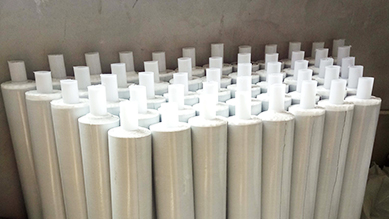Understanding Intumescent Strips Types and Applications
Intumescent strips are essential components in fire protection systems, designed to enhance the safety and integrity of buildings during a fire. As a passive fire protection method, these strips expand when exposed to high temperatures, sealing gaps and preventing the spread of smoke and flames. This article explores the types of intumescent strips available, their applications, and the advantages they offer in commercial and residential settings.
What are Intumescent Strips?
Intumescent strips are made from materials that undergo a significant volume increase when exposed to heat. Typically composed of polymers or specialized formulations, these strips are incorporated into doors, window frames, and other structural elements. Their primary function is to create a barrier that restricts the passage of smoke and fire, thus allowing for safer evacuation routes and minimizing property damage.
Types of Intumescent Strips
1. Non-Composite Strips These are usually made from a single type of intumescent material. Their simplicity makes them cost-effective and easy to install. Non-composite strips are often used in internal doors and access panels, where high levels of fire resistance are required without the need for complex installations.
2. Composite Strips Unlike non-composite ones, composite strips are made from a combination of materials, enhancing their performance under different fire conditions. These usually consist of an intumescent core encapsulated in a rigid outer shell. Their dual nature allows for improved resistance to mechanical impacts and better performance under extreme heat, making them suitable for external doors and high-traffic areas.
3. Self-Adhesive Strips Self-adhesive intumescent strips come with a pre-applied adhesive backing, making them incredibly convenient to install. This type is ideal for retrofitting existing doors and frames without the need for special tools. They can be applied quickly and effectively, increasing the fire safety of older buildings and structures.
4. Fire and Smoke Resistant Strips These strips combine intumescent materials with additional fire-resistant features. They are engineered to not only expand under heat but also block and contain smoke, rising to meet the regulatory standards for fire safety. This type is commonly employed in high-rise buildings and other structures requiring stringent fire safety compliance.
types of intumescent strips

5. Pencil and Section Strips These strips come in various profiles, including pencil shapes and larger section profiles, accommodating different design requirements. Pencil strips are generally used in smaller gaps, while larger sections can fill more significant voids. Both types can be highly effective depending on the application.
Applications of Intumescent Strips
Intumescent strips find their utility in a myriad of applications, including
- Door Frames Used in fire doors, these strips expand to seal gaps between the door and its frame, preventing smoke and flames from penetrating the protected area. - Window Frames In buildings where fire safety regulations are crucial, intumescent strips are installed in window frames to enhance fire resistance without compromising visibility. - Wall Penetrations Pipes and electrical conduits that pass through walls can create vulnerabilities in fire-rated walls. Intumescent strips can be wrapped around these penetrations to maintain the integrity of the barrier during a fire. - Ventilation Systems In HVAC systems, intumescent materials can be integrated to prevent the spread of smoke through ductwork in the event of a fire.
Advantages of Using Intumescent Strips
The incorporation of intumescent strips provides numerous benefits
- Enhanced Safety By effectively preventing the spread of fire and smoke, these strips contribute to the safety of occupants and the overall building. - Cost-Efficiency Compared to active fire protection systems, intumescent strips offer a more straightforward, often less expensive option for fire safety. - Ease of Installation Many types of intumescent strips are designed for quick installation, minimizing disruption during the building process or retrofitting. - Regulatory Compliance Utilizing intumescent strips helps building owners meet local fire codes and regulations, ensuring that their properties pass inspections.
In conclusion, intumescent strips are an invaluable tool in the realm of fire protection. Understanding the various types and their applications can help building owners and architects make informed decisions that enhance safety and compliance while safeguarding lives and property. As fire safety standards continue to evolve, the role of intumescent strips will only become more critical in promoting safer environments for everyone.
-
The Versatility of Cloth Insulation TapeNewsApr.07,2025
-
The Power of Self Amalgamating Silicone TapeNewsApr.07,2025
-
The Importance of Weatherstrip Seal: Your Ultimate Protection SolutionNewsApr.07,2025
-
Tape Electrical Insulation: A Reliable Solution for Your Electrical NeedsNewsApr.07,2025
-
Discover the Wonders of Electrical Splicing TapeNewsApr.07,2025
-
Discover the Versatility of PVC Electrical TapeNewsApr.07,2025
